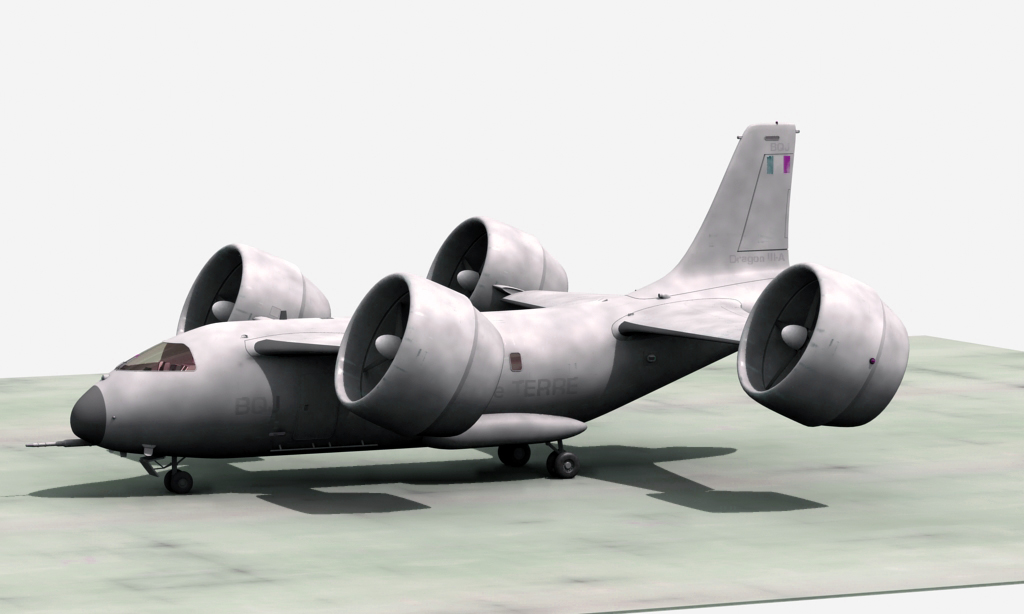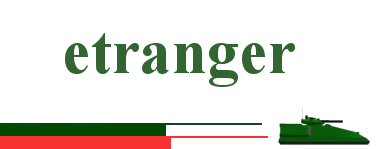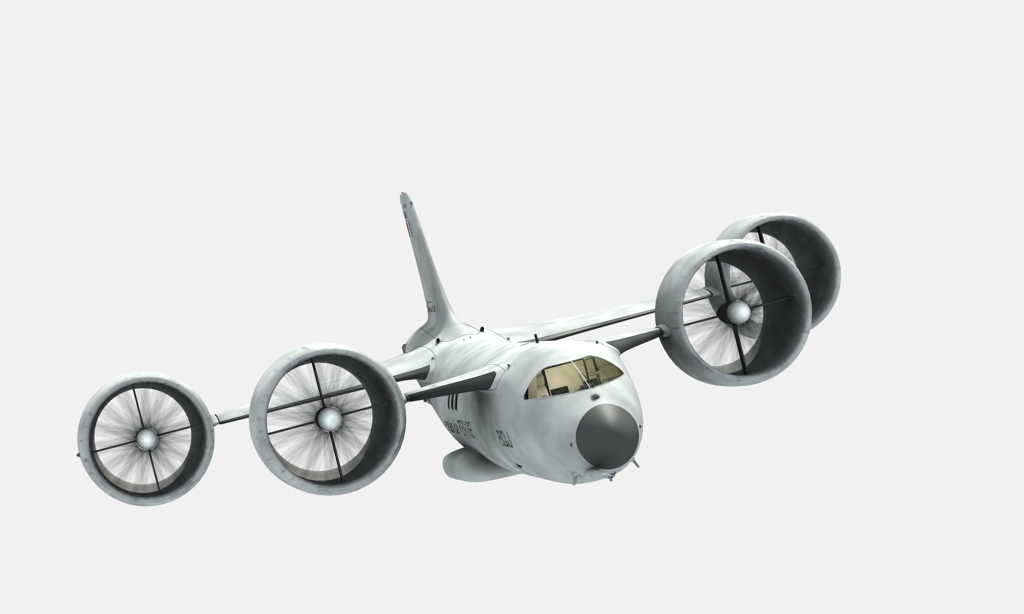
|
Aérofabrique Dragon-III Transport |

|
Introduction The
Dragon-III is Narrative The first wave of I Bataillon Régiment Étranger d'Aero -Infanterie flew in tight formation over the broadtop forests of Aurore
towards AO Gabrielle where a detachment of Vedettes was valiantly holding out
against hundreds of Capu in a small hamlet. The core
of the formation was the four big Dragons their bellies full of veteran
Legionnaires. In loose orbit around them were the heavily armed Zephyr gunships while out ahead were the
light scouts. I/REAI was the hardest
hitting reserve the colony had, an experimental unit capable of rapid reaction
no conventional unit could match. The battalion’s three companies each
comprising 10 aircraft with a mixture of transports, gunships
and scouts. It moved fast and suffered casualties to match. The French had
pioneered airmobile tactics in 1950’s The Capu didn’t know
what hit them, Blindicide missiles smashed into their
AFVs sending debris and bodies flying. The gunships then stood off and picked off infantry soldiers
with their autocannons. The enemy momentarily
suppressed, the Dragons swept in to reinforce the embattled Vedettes. The Dragons flew low and fast, surprisingly
agile for just large aircraft, and scattering counter-measures as they went.
Seconds later seventy fantassins were on the ground
running to positions alongside the militia men while the Dragons swivelled and
raced for safety. Two more companies were on their way tasked with cutting off
the Kafer force and destroying it in detail. |
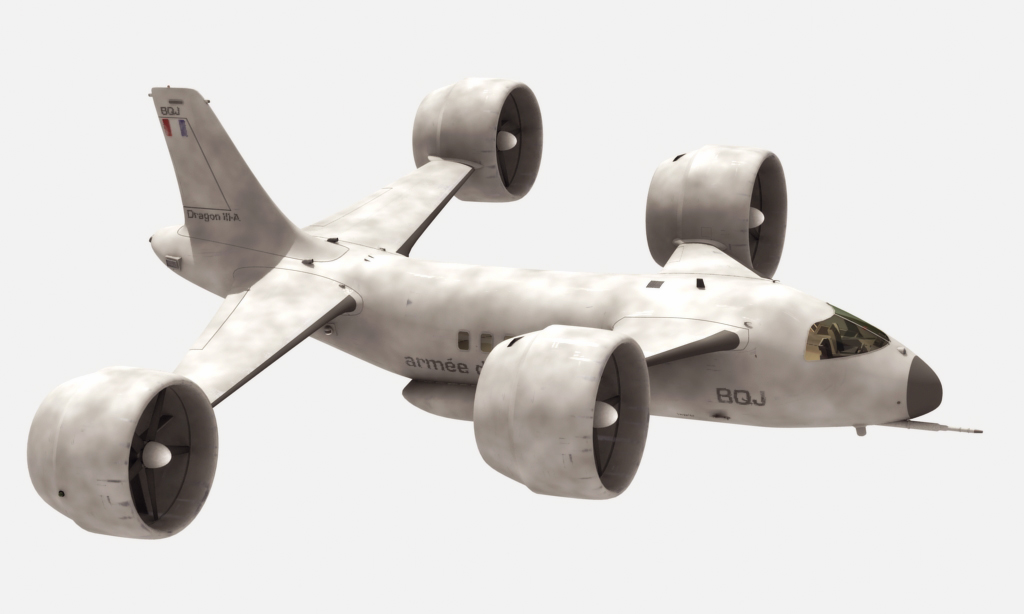
|
Development History and Description The
Dragon-III is Aérofabrique designed the Dragon-III to build upon this sound base but further
develop the aircraft. In the end it was decided to go with four shrouded props
to reduce forward signature but also aid agility and stability over the more
traditional arrangement of the Dragon II. The main
fuselage is based on that of the Dragon II although it has been significantly
modified to accept the new wing arrangement. The main entrance and exit is
through the large rear ramp. There are side doors but these are normally used
only by the crew due to the proximity of the engines. The wings
are entirely new with a new arrangement with larger wings to the rear and
smaller wings to the front of the airframe. On the tips of the wings are four Salmson GT57 shrouded turboprop engines which provide the
aircraft with its power. The four
engines are each independently steered by the fly-by-light flight system which
can give the craft superb agility for such a large craft. Indeed the Dragon-III
is renowned for its close in manoeuvrability and stable handling
characteristics. When compared with its predecessor it has provided its
operators with a major leap forward in capability. Its flight
systems are relatively simple with the usual array of sensors and avionics
systems to aid the flight crew. The pilots are equipped with ejector seats and
the passengers crash resistant seating. The aircraft is fitter with a
retractable air to air refuelling probe to increase its operating range. The
Dragon-III is designed to operate with a single crew member, however many also
carry a second crewman on the flight deck to act as a co-pilot, gunner and
flight engineer. In addition most units fly with at least one loadmaster. History The first
Dragon-III flew in 2287 but did not come into widespread service as the
Dragon-IIIA until 2291 slowly replacing the bulk of the Dragon-IIs in Armée de Terre and Armée de l’Air service with
initial examples going to units in the By 2298 the
Dragon-III had replaced the Dragon-II in all roles except for with the navy’s
carriers. These retained the Dragon-II as its more conventional design took up
less deck space than the newer model. The navy does operate the model in the
land based search and rescue role however. Dragon-IIIs have been heavily involved in the Kafer War so far in
the hands of the battalions of the Régiments de
Aviation Légère Coloniale,
Aviation Légère de l’Armée
de Terre and wings of Armée de l’Air.
The Dragon-IIIs have proven as robust and reliable as
was expected and have been at the heart of many significant airmobile
operations. As might be
expected in addition to the normal transport variant the Dragon-III has been
developed into an array of specialist models. These include EW, search and
rescue, UAV controllers, extemporised gunships and
many others. The
Dragon-III has proved a very popular export model serving in militaries across
the core and the colonies. Several nations also build this aircraft under
licence. Statistics Type: Tilt-Rotor
Utility Light Transport Max Speed: 600 kph |
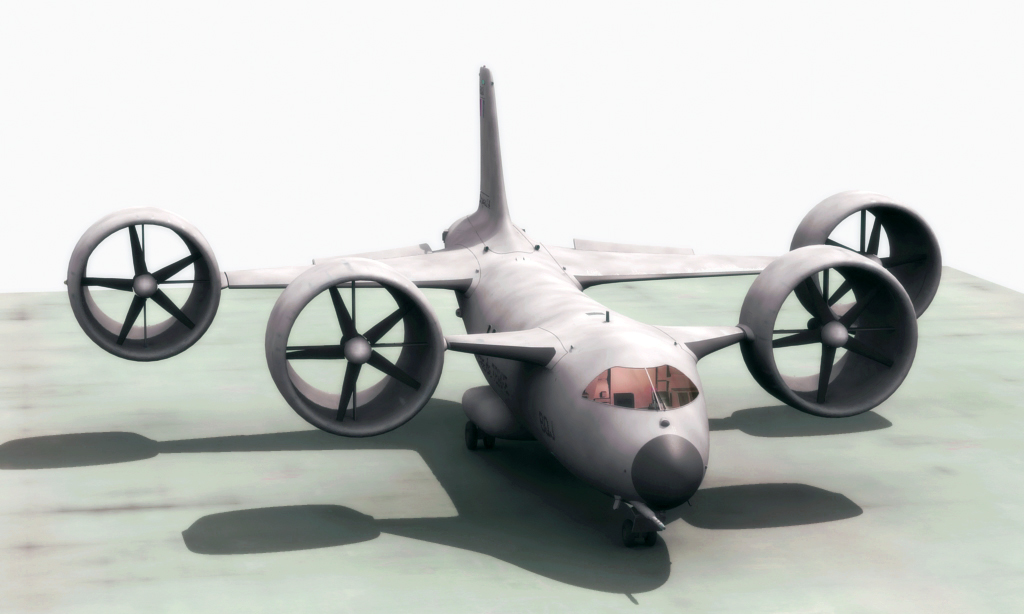
|
Models Dragon-IIIA The
Dragon-IIIA is the standard transport model described above. It has undergone
several upgrades during the course of its career but has remained essentially
the same. The A2 model includes remote dorsal gun and four hardpoints
for external ordnance. Unarmed IIIAs are popular
transport aircraft in the colonies. Dragon-IIIR The IIIR is
the specialist combat search and rescue (REDCO) model operated by special
squadrons of the navy and air force. These are highly modified craft designed
to be able to rescue downed air crew or isolated special
forces teams from behind the lines. This is a role the French perfected
during the CAW and pride themselves on the skills they have maintained. The
Dragon-IIIR is heavily armed with two turrets and numerous hardpoints,
has extensive stealth and impressive EW capabilities. Dragon-IIIPMD The PMD or
‘Puff the Magic Dragon’ is a Tanstaaflian conversion
of the Dragon-IIIAs acquired by the TFL surplus from
the French. It includes missile hardpoints, dorsal
turret, three 12mm door guns and a battery of no fewer than six forward firing
25mm autocannon. The PMD is used to escort TFL air
mobile infantry formations to their targets and provide close. There were
initially four PMDs which were converted, although
there was no standardisation across the fleet, and it is not known how many
remain in service. Notable Units I Bataillon Régiment Étranger d'Aéro-Infanterie I/REAI is
an experimental French unit formed in the 2290s by combining Foreign Legion
infantry soldiers from I/3e REI and aviation crews from II/5e RALC in a potent
and highly mobile package. The battalion fought on Aurore
and Beta Canum earning a reputation as an elite and
hard hitting unit in countless actions. The battalion has 12 Dragon-IIIA2 in
its inventory. Flotilla 121F Flotilla
121F is a crack REDCO search and rescue squadron of the French navy. Normally
based on Nouvelle Escadrille des Hélicoptères
3/131 'Coq Joien' EH 3/131 is an Armée de l’Air squadron that was formed for action on Elysia during the Elysian Revolt where it operated Dragon-IIs in support of the army. At the end of the war the unit destroyed its craft and relocated to Beta Canum where it re-equipped with Dragon-IIIAs. During the Kafer War the squadron operated in support of 9e Corps before the survivors evacuated to New Africa, where it served until the Liberation. The squadron has since been heavily involved in operations against Kafer remnants.
Copyright 2008, D Hebditch and Laurent Esmiol. All images by Laurent Esmiol
|
